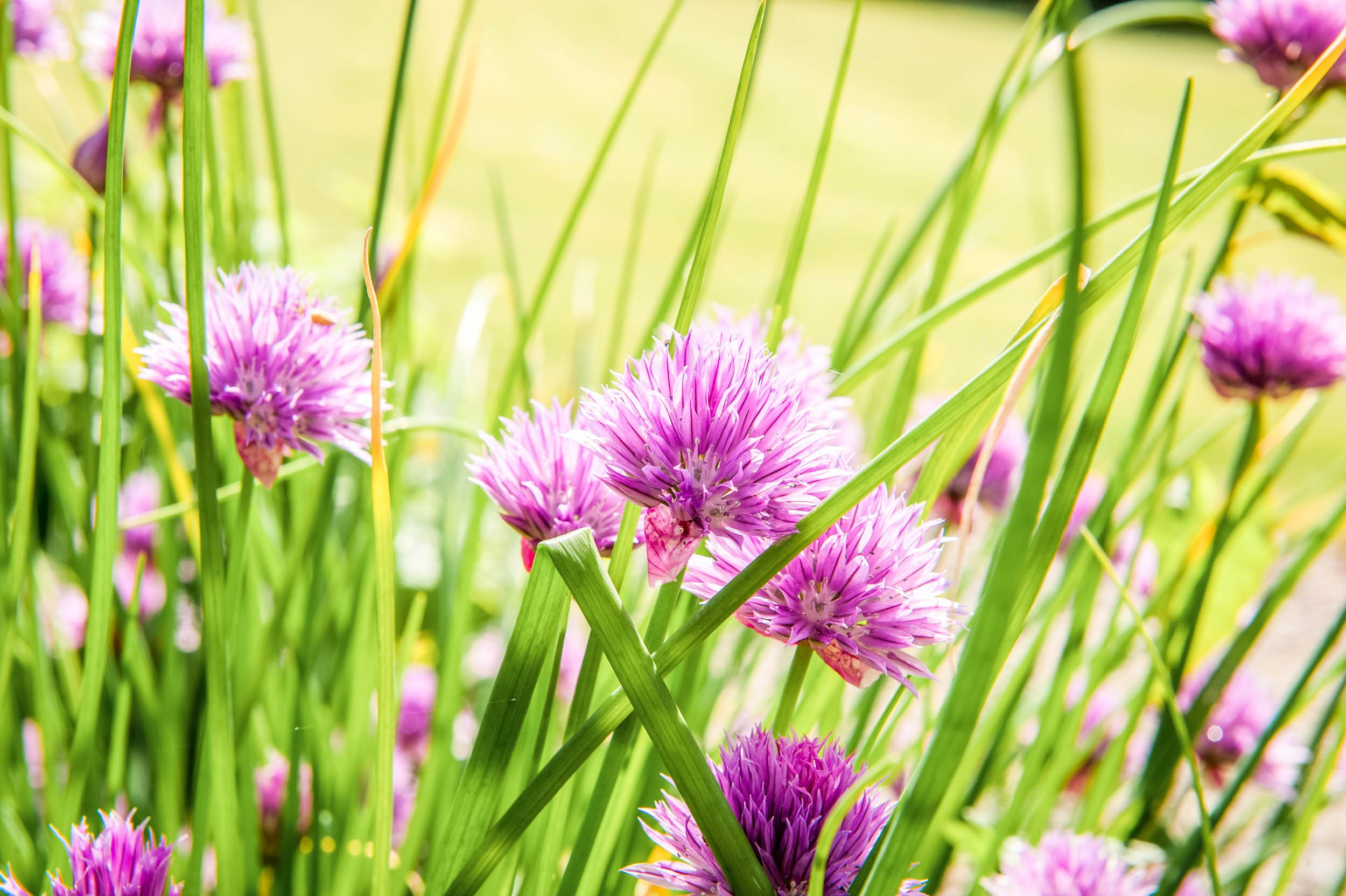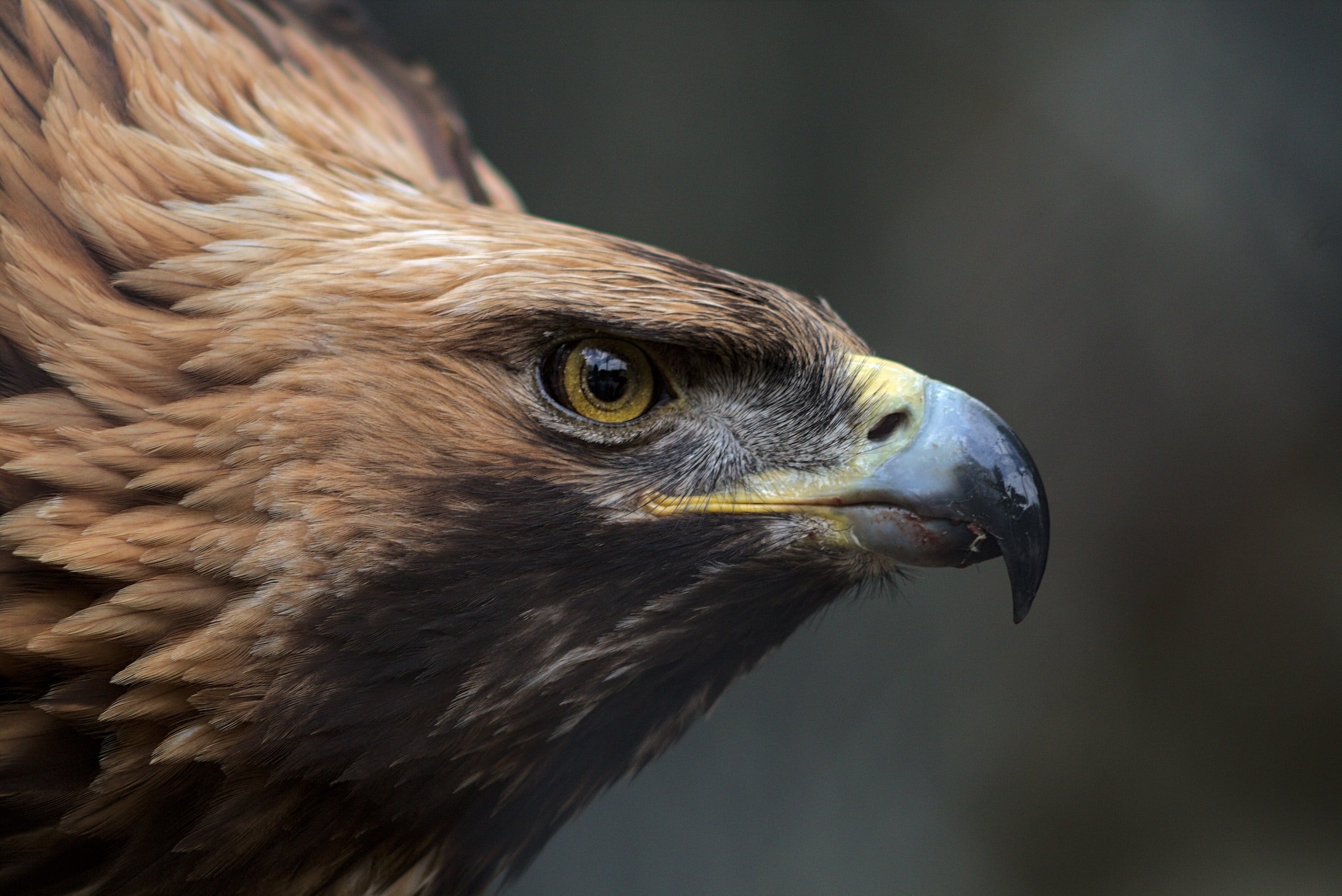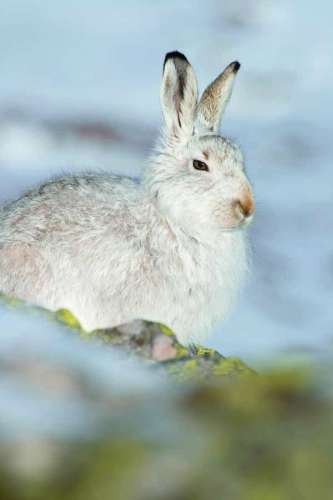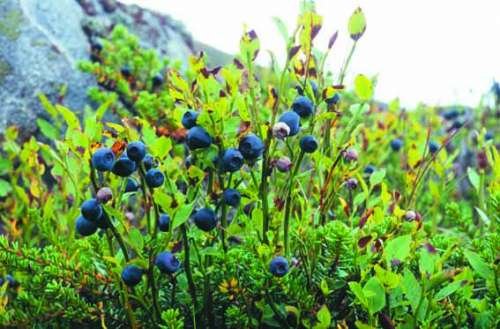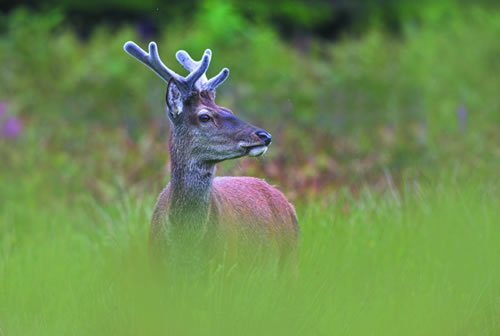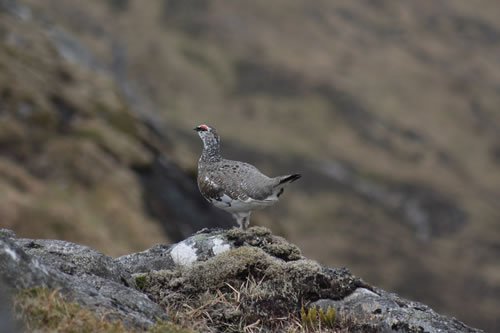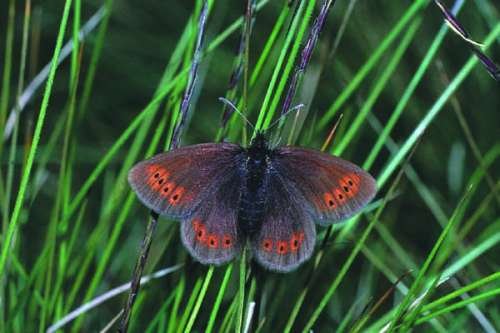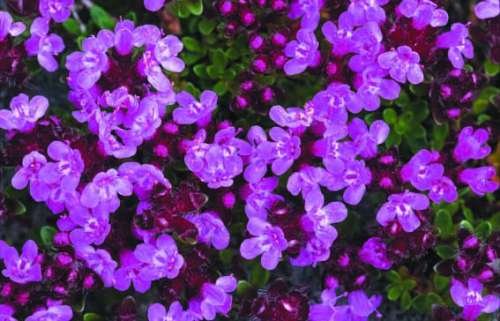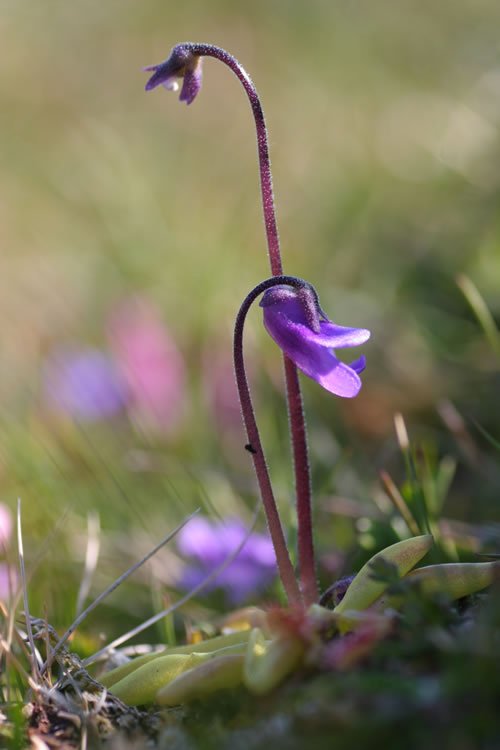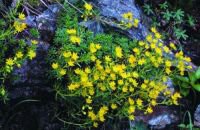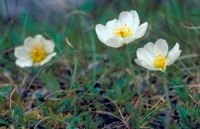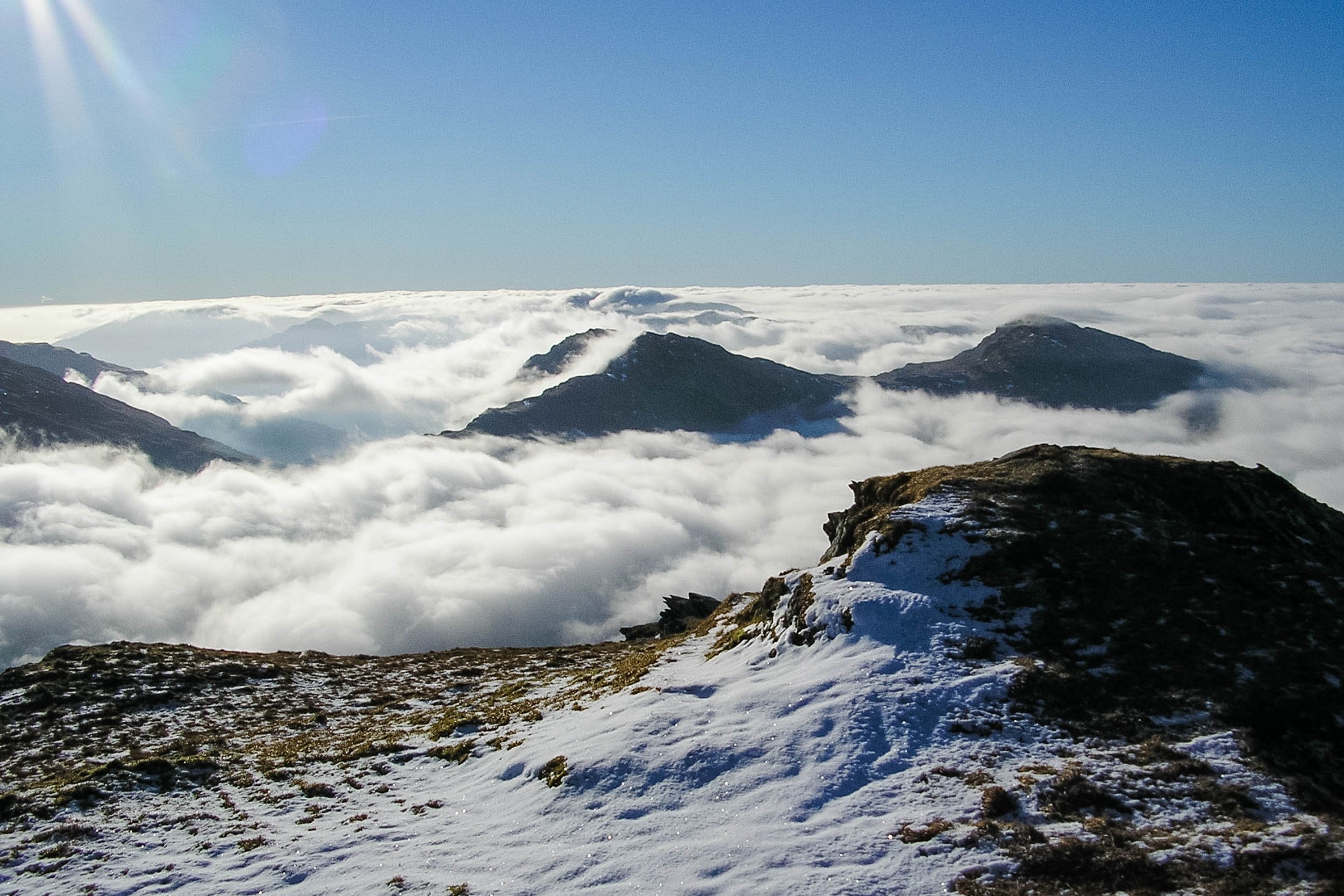
Mountains & Moorlands
(Picture: Arrochar Alps)
Nature in Loch Lomond & The Trossachs
It’s hard to imagine a more hostile environment for wildlife than our often cold, wet and windy mountains and moorland. Yet there are species living here that are found nowhere else in the UK. Plants like purple saxifrage hunker down in rocky pockets of soil out of the drying winds. Shy mountain hares and cocky ptarmigan put on ghostly white disguises to hide from predators in the winter snow fields. Delicate mountain ringlet butterflies hide in the matgrass, waiting for brief bursts of sun, when they come out to feed.
The list below will introduce you to some of the wildlife to be found in the Park’s mountains and moorland. There are also links to other websites where you can find out more. Knowing a little more about the lives of some of these amazing species adds an extra thrill to a moorland walk or mountain climb - whatever the weather.
-
Latin name: Lepus timidusmountain hare
Gaelic name: Geàrr; maigheach bhàn
Length: 46 - 65cm Weight: 2 – 3kg
Where: Mountains and moorland, for example the hilltop moorlands between the Tay and the Earn; Glen Falloch hills; Ben Vorlich
When: All year round
Spot a mountain hare on a snowy hillside and you get a taste of what Scotland must have been like just after the last Ice Age. These beautiful creatures are perfectly adapted to the Arctic landscape.
Mountain hares’ coats change with the seasons to blend in with the landscape – grey brown in summer, grizzled grey-blue in spring and autumn, and pure white in winter. By doing this they hope to escape detection by their predators. Sometimes they change out of sync with the snow melt, and you will see a white hare sitting happily among the green shoots of heather, seemingly unaware of its malfunctioning camouflage! In addition to their changing coats their footwear is also adapted to an Arctic existence. They have broad, thickly furred feet that act like snow shoes to help them cross snowfields without sinking in to the deep drifts.
Undisturbed, the hares spend most of their day hunkered down in shallow depressions called forms, coming out mostly at dawn and dusk to graze on grass or heather. But if you startle one watch which way it runs –most head straight uphill. This is another trick to avoid the hares’ main predator, the golden eagle, which prefers to be able to attack its prey from above.
Find out more at:
www.mammal.org.uk
-
Latin name: Thymus polytrichus
Height: 5cm
Where: Hills and mountains, particularly on rocky ledges and drier places
When: Flowers June to September
Cushions of these tiny purple flowers speckle the rocky places on our hillsides all summer long. Though not as strongly scented as their garden-cultivated cousins, you can still get a whiff of the Mediterranean if you rub their evergreen leaves between your fingers.
Scottish people have used this little herb for thousands of years, both to flavour their food and to make a medicinal tea – tae girse as the Shetlanders call it. Some believed it could help to cure nightmares, but for most it makes a soothing drink for an upset stomach.
We are not alone in our appreciation of wild thyme. Bees love its scent and nectar too.
-
Latin names: Calluna vulgaris (Ling); Erica cinerea (Bell heather); Erica tetralix (Cross-leaved heath)
Height: 30-50cm
Where: Inchcailloch; open uncultivated areas eg. Glen Ogle, Glen Dochart, Glen Falloch, Strath Fillan, Duke’s Pass, Glen Ample
When: June to September
Our heather-clad mountains and moors are deceptive. There are actually three different species of plants that we usually call heather – all with their favourite places to grow, and their own time to flower.
Much of what we see on our hillsides will be ling – its honey-scented flowers filling the air with perfume, and bees, from July to September. Look closely and you will see it has tiny, triangular leaves wrapped tightly around the stalks, with dense spikes of pinky-purple, bell-shaped flowers.
In drier places check to make sure you are not looking at bell heather. Despite its name its flowers are actually more egg-shaped. They are often a deeper, richer purple than those of ling, while the leaves twirl round the stems in whorls of three.
The third ‘heather’, cross-leaved heath, likes wetter places. Its tough, spiky leaves are set in whorls of four around the stem, which made it ideal for scrubbing pots in the days before scouring pads. This explains its Gaelic name, ‘fraoch an ruinnse’, ‘rinsing heath'. Its flowers are similar to those of bell heather, held in a bunch at the tips of the stems.
In fact all three species of heather have played an important part in the lives of Scottish people, particularly in places where trees and grassland were scarce. Heather has been used for thatching, building, fuel, animal fodder, bedding, brooms, ropes and dyes. Today most of these things have been replaced by wood and plastic – but heather still has one important use. It has again become a key ingredient in a special beer called ‘fraoch’ – with some of the heather being gathered in the National Park.
-
Latin name: Erebia epiphron
Size: Wingspan 38mm
Where: Grassy mountainsides and gullies above 300m, for example Ben Lomond; Ben Vane; Breadalbane hills
When: Late June to early August on calm, sunny days
Walkers who are lucky enough to get a sunny day on the hill in early summer have the best chance of seeing these velvety-brown butterflies. Mountain ringlets are the country’s only truly alpine species – the first butterfly to recolonise the UK after the last ice age.
They may look small and delicate, but they are a tough and hardy species. The caterpillars survive one, and sometimes two, winters on the bleak, exposed mountainsides. They hide deep in the tussocks of mat grass that are thought to be their food plant, sometimes blanketed in snow for weeks on end.
The dusky-winged adults, which emerge from late June to mid July, are not so sturdy. They usually survive for less than a week, their lives devoted to finding a mate and laying the eggs for the next generation. The butterflies feed on the nectar of mountain flowers like tormentil or wild thyme, flying low to the ground to avoid being spotted by birds, which are their main predators.
Like some hillwalkers they only come out in warm sunshine, and if you see one mountain ringlet you may possibly see hundreds, as they often emerge en masse when conditions are right. It’s mostly the males you will see – the females are too weighed down by their eggs to fly often! The males will land on anything brown they spot – moss, sheep’s wool, even droppings – in the hope that it’s a female with which to mate.
Despite being one of our first colonisers, mountain ringlets are now found in only a small area of Scotland and in the central Lake District. Climate change could prove a threat to them in these last refuges, as warmer, wetter summers and milder winters could alter their habitat or affect their survival in other ways.
-
Latin name: Dryas octopetal
Height: 3 - 10cm in flower
When: Flowers May - July
Where: Mountains, particularly on limestone, for example Ben Lui and Ben Lawers
You'll find mountain avens tucked high up on the rocky outcrops of limestone hills like Ben Lui. As its name suggests the flowers of this distant relative of the rose have a ruff of eight delicate white petals surrounding a spiky yolk-yellow centre.
Its tiny, oak-shaped leaves are actually evergreen, and despite their glossy green uppers are covered with downy white hairs underneath - both adaptations designed to help it withstand the winter ice and snow.
Late in the summer the flowers are followed by spiralling fluffy white seedheads, reminiscent of a tidy version of old man's beard.
-
Latin name: Pinguicula vulgaris
Scottish names: Earning-girse (curdling plant); Ostin gorse (cheese plant)
Where: Moist, open upland areas eg Glen Ogle, Glen Dochart, Glen Falloch
When: Flowers from May to July
Boggy moors and mountains are the butterwort’s favourite home. It has found a way of living here where few other plants can survive – by becoming a carnivore! The innocent-looking yellowy-green rosette of leaves is really a death trap for small invertebrates. The leaves are covered with sticky hairs that catch unwary insects. Once it has trapped its prey its leaves curl in, while enzymes slowly digest the animal, extracting the essential nutrients lacking from the poor soil where it grows.
From May to July look out for its surprisingly pretty flowers, which give it its Gaelic name of ‘mothan’, meaning ‘bog violet’. The simple, rich purple blooms are held on wire thin stalks, hardly seeming part of the same plant.
Butterwort’s English and Scots names come from its ability to help milk curdle. In the past it was used to make cheese and butter, the enzymes in its slimy leaves doing the same job as rennet.
-
Yellow saxifrage - Latin name: Saxifraga stellaris
Purple saxifrage - Latin Name: Saxifraga oppositifolia
Where: Rocky crags; wet flushes and stream sides; particularly on limestone such as Ben Lui and Ben Lawers area
When: May to July
These beautiful little plants are all mountain lovers –dotting our sometimes drab hillsides with colour. Purple saxifrage is the first to flower in late April or early May on damp, rocky ledges. The cushions of densely set, tiny oval leaves are sprinkled with its delicate lilac flowers. It prefers alkaline soils so it is most often found on the limy soils of Ben Lui and Ben Lawers.
Yellow saxifrage waits until June before revealing its golden flowers. The blooms are often speckled with red like bright freckles. It is often found by streams as it loves the damp even more than purple saxifrage.
Starry saxifrage is also a lover of mountain streams. It is much less retiring than its purple cousin, holding its well-named white flowers aloft on slim stalks above a rosette of fleshy leaves in June and July.
-
Latin name: Lagopus mutus
Size: Length 34 - 36cm Wingspan 54 - 60cm
Where: Mountain boulder fields above 2000m, for example Ben Lomond; Ben Vorlich
When: All year round
True mountain-dwellers, you rarely see these pigeon-sized birds below 2000m. Their name comes from the Gaelic tarmachan, which means ‘croaker’ – and it’s often their call that gives away their presence. They are masters of disguise, their lichen-grey plumage matching the boulder fields where they make their homes in summer, gradually changing to the mottled white of the winter snowfields.
They are shyer of the golden eagle, their most feared predator, than they are of people, relying on their camouflage to keep them safe. If you manage to get close enough you will see that ptarmigans’ feet are swathed in thick feathers, like miniature snowshoes. These protect them from the constant cold of the winter snow holes where they roost.
The adults feed on the shoots of plants like heather and blaeberry, which often peep through the snow even in the depths of winter. But the chicks are fed on insects, and a cold, wet spring can seriously affect their chances of survival.
The mountains of the National Park are probably their most southern outpost in the UK, and although a handful of other birds can been seen this high in the mountains, ptarmigan are the only species to make a permanent home here.
Find out more at: www.rspb.org.uk
-
Other names: Bilberry; whortleberry; whinberry; wimberry
Latin name: Vaccinium myrtillus
Height: 20 - 60cm
Where: Oak woodlands; open heather moorland, for example at David Marshall Lodge; Duke’s Pass; Inchcailloch
When:All year round but fruiting July to September
Perhaps more than any other wild fruit, blaeberries can bring out the primitive hunter-gatherer in us. People have been picking the purply-black fruit since prehistoric times. But the pea-sized blaeberries are surprisingly hard to find among the bright green leaves, and you sometimes see walkers on hands and knees hunting for their sweet-sharp prizes.
The plants love the acid soils of peaty moorland and pine woods. The leaves appear on the low, scrubby bushes in spring, followed by pinky-green, bell-shaped flowers that bloom from April to June. You can find the fruits from July, when they first ripen, to September – if others haven’t got there first! Blaeberries have all kinds of health-giving properties. They can protect against cancer and heart disease, infections and viruses, even upset stomachs.
If you decide to go picking, remember not to completely clear an area or damage the bushes. Other animals, like red grouse and ptarmigan, also enjoy feasting on the fruit and shoots, while the beautiful green hairstreak butterfly often lays its eggs deep among the foliage, ready to provide the caterpillars with their first meals when they emerge.
-
Latin name: Cervus elaphus
Size: Height at shoulder (stags) up to 120cm
Weight: (stags) 60 – 130kg
Where: Glen Ample; Loch Arklet; Inversnaid; North Loch Katrine; Brig o’ Turk; Glen Kendrum; Inverlochlarig; Arrochar Alps
When: All year round: autumn for the rut; winter at lower levels
You are most likely to see these magnificent animals in winter, when they come down from the snowy mountain plateaux to escape the bitter cold, and to find food in the glens. At this time of year it’s hard to understand why they are called ‘red’ deer. They have changed their rich, russet coats for a thicker, muddy grey version to keep out the icy cold.
To see them at their most magnificent you need to be walking in the hills in autumn. The mature stags are in full rut – their roars drifting eerily across the glens, their coats glowing foxy-red, and brandishing their massive antlers at lesser challengers. The prize is the right to mate with a harem of adoring hinds. If you don’t actually spot the deer you may find a muddy – and often very smelly – hollow where a stag has covered himself in mud, urine and semen to make himself even more irresistible to the hinds!
The hinds are smaller and much less conspicuous than the stags. They spend much of the year in all-female herds, or keeping a low profile to make sure they don’t draw attention to the young calves they are rearing.
Partly for this reason only the stags have antlers. They grow a new set every year, each set bigger and more impressive than the last. A fully mature stag’s antlers can be 140cm long and weigh up to 6kg. In spring they lose their antlers to make way for the new set, and you can sometimes find a cast antler – they lose them one at a time. Later in the season stags sometimes give their presence away by ‘fraying’ their antlers on tree branches to remove the itchy velvet that covers them as they grow.
-
Latin name: Lagopus lagopusRed grouse
Length: 37- 42cm Wingspan: 55 - 66cm
Where: Any upland moorland area
When: All year round – early mornings are a good time to see them
Red grouse are technically the same species as the paler willow grouse that you can find all over northern Europe. But it does seem to make them seem more special when you know that you can only see these ruddy brown characters with their scarlet eyebrows here in the UK.
Go for a walk anywhere on the heathery hillsides of the National Park and there’s a chance that you will be told in no uncertain terms to ‘go-bak go-bak’, as the grouse rise up from their hiding places to complain about your intrusion. You can find these hardy birds breeding at up to 2000ft. The tough little chicks are able to fly from their nest in the heather at 12 days old to escape predators. In fact the heather is the grouse’s element – they eat it, nest in it, hide in it. In winter they use their strong, feathered legs to dig down beneath the snow to get at the heather shoots, inspiring their Latin name, ‘lagopus’ which means ‘hare-footed’.
Find out more at: www.rspb.org.uk
-
Latin name: Aquila chrysaetos
Length: 76 - 89cm Wingspan: 190 - 227cm
Where: The Trossachs Bird of Prey Trail; possible sightings over any upland area in the Park
When: All year round
Although the golden eagle is perhaps Scotland’s best known bird you will be lucky indeed if you see one in the Park. Only a few pairs breed in the area, hidden away in our remotest glens. They build their airy nests on cliff ledges, or sometimes in venerable old pine trees. They will use the same nest for many years, adding to it each season until it becomes a tower of branches and twigs over a metre high.
In winter and early spring the adults perform a dramatic mating dance together, tumbling through the sky with talons locked together in what looks like mortal combat. As they near the ground they suddenly break apart and swoop into the air again like fighter jets. Later in the summer you may see the adults quartering the moorland for food for themselves and their chicks – hares, rodents, and, when they strike lucky, a dead red deer.
The golden eagle population was decimated in the last century due to persecution by gamekeepers. Conservation organisations have been working hard to ensure that these magnificent birds return to the many places in Scotland where they used to be a familiar sight. If you do suspect you’ve spotted one, check out the ends of its wing feathers. Some people think they have seen an eagle when in fact it’s a buzzard, whose wings-ends are rounded. Buzzards are also much smaller, but this is sometimes hard to gauge at distance. If the wings are splayed like outstretched fingers you’re very lucky– you’re probably looking at a golden eagle.
Find out more at www.rspb.org.uk
